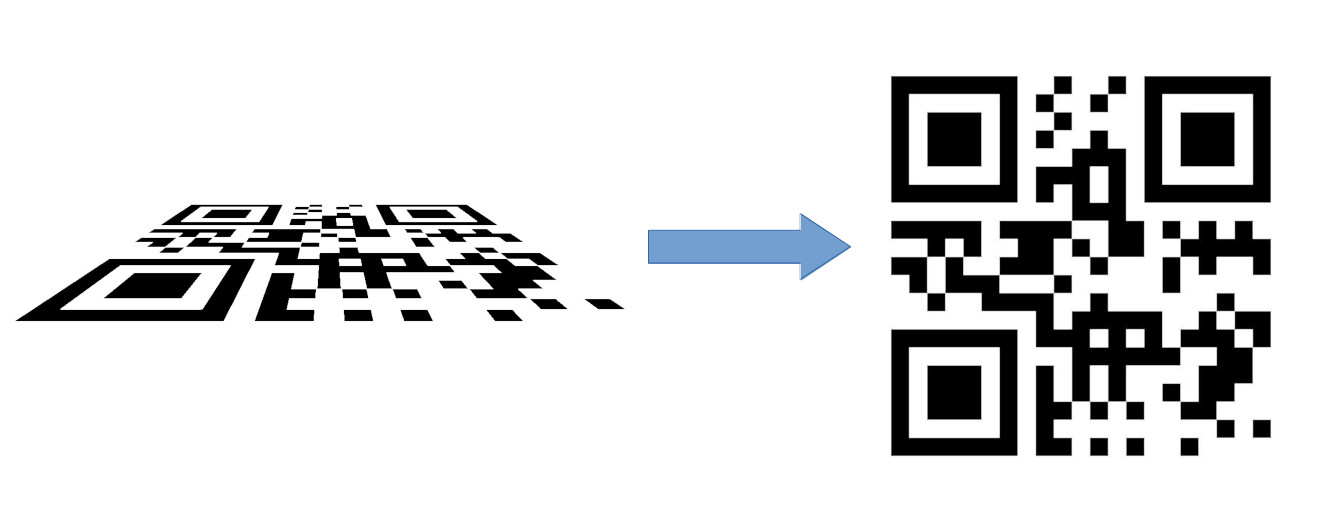Algorithm for Locating the Vertices of a QR Code and Removing Perspective
Keywords:
QR Code, perspective, image correction, image recognition, image processingAbstract
Scanning QR Codes from cellular phone cameras has made reading this type of two-dimensional code more accessible. However, QR Code photos may show geometric distortions caused by camera positioning in relation to the image to be read and thereby, resulting in a perspective image. These deformations make it difficult to decode QR Codes and thinking about it, this article proposes an algorithm that, first, finds the vertices of the polygon that delimits the area of a QR Code and from the coordinates of these vertices, the algorithm removes the perspective from the image.
Downloads
References
S. Morita and T. Eckschmidt, QR Code: Comunicação e Engajamento. CreateSpace Independent Publishing Platform, 2014.
S. Tiwari, “An Introduction to QR Code Technology,” in 2016 International Conference on Information Technology (ICIT), 2016, pp. 39–44.
D. W. Incorporated, “History of QR Code,” 2019. [Online]. Available: https://www.qrcode.com/en/history
M. S. Hodage, M. S. Mangade, M. P. Touti, M. K. Yadav, and M. Kotkar, “Smart QR Code Based Application as Medicine Spotter for Visually Impaired,” International Journal of Advance Scientific Research and Engineering Trends, vol. 3, no. 5, 2018.
C.-y. Law and S. So, “QR codes in education,” Journal of Educational Technology Development and Exchange (JETDE), vol. 3, no. 1, p. 7, 2010.
C.-T. Huang, Y.-H. Zhang, L.-C. Lin, W.-J. Wang, and S.-J. Wang, “Mutual authentications to parties with QR-code applications in mobile systems,” International Journal of Information Security, vol. 16, no. 5, pp. 525–540, 2017.
H. Zhang, C. Zhang, W. Yang, and C.-Y. Chen, “Localization and navigation using QR code for mobile robot in indoor environment,” in 2015 IEEE International Conference on Robotics and Biomimetics (ROBIO). IEEE, 2015, pp. 2501–2506.
H. Tribak and Y. Zaz, “QR Code Recognition based on Principal Components Analysis Method,” (IJACSA) International Journal of Advanced Computer Science and Applications, vol. 8, no. 4, 2017.
T. Hicham and Y. Zaz, “QR code patterns localization based on Hu Invariant Moments,” Int. J. Adv. Comput. Sci. Appl, vol. 8, no. 9, p. 162, 2017.
L. Belussi and N. Hirata, “Fast QR Code Detection in Arbitrarily Acquired Images,” pp. 281–288, 2011.
L. Karrach, E. Pivarčiová, and P. Božek, “Identification of QR Code Perspective Distortion Based on Edge Directions and Edge Projections Analysis,” Journal of Imaging, vol. 6, no. 7, p. 67, 2020.
J. Zhou, Y. Liu, and A. Kumar, “Research on Distortion Correction of QR Code Images,” 2012.
J.-w. Wei, S.-g. Dai, and A. Mu, “Rectification And Localization of QR Code Image Based on Methmatical Morpholoy and Hough Transformation,” Computer and Information Technology, vol. 6, 2010.
G. Klimek and Z. Vamossy, “QR code detection using parallel lines,” in 2013 IEEE 14th International Symposium on Computational Intelligence and Informatics (CINTI). IEEE, 2013, pp. 477–481.
K. Suran, “QR code image correction based on corner detection and convex hull algorithm,” Journal of multimedia, vol. 8, no. 6, p. 662, 2013.
P. Boulos and I. de Camargo E. Oliveira, Geometria analítica: um tratamento vetorial. Prentice Hall Brasil, 2005.


